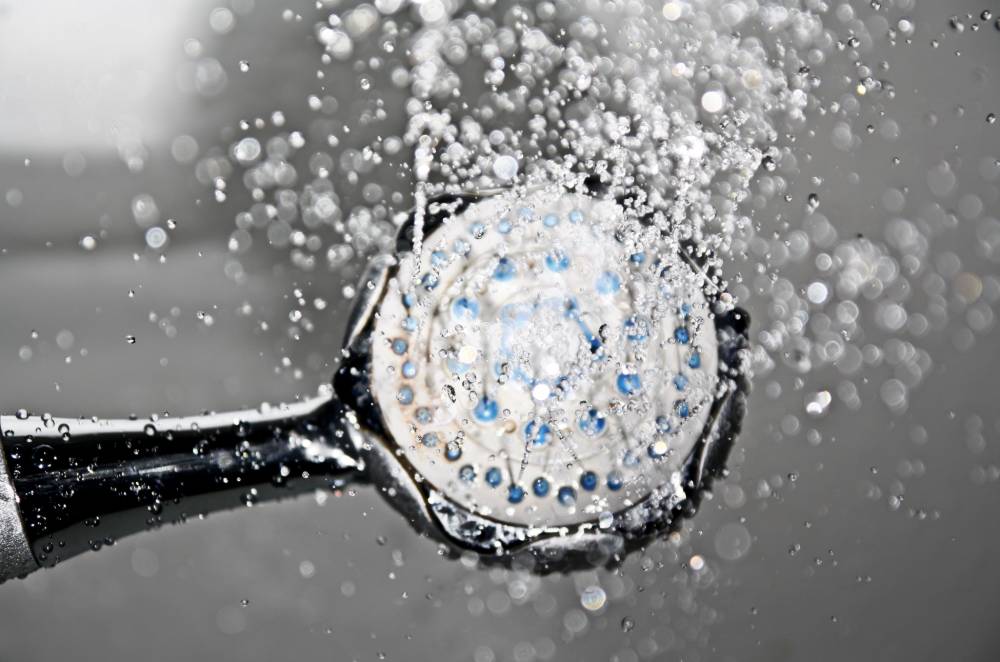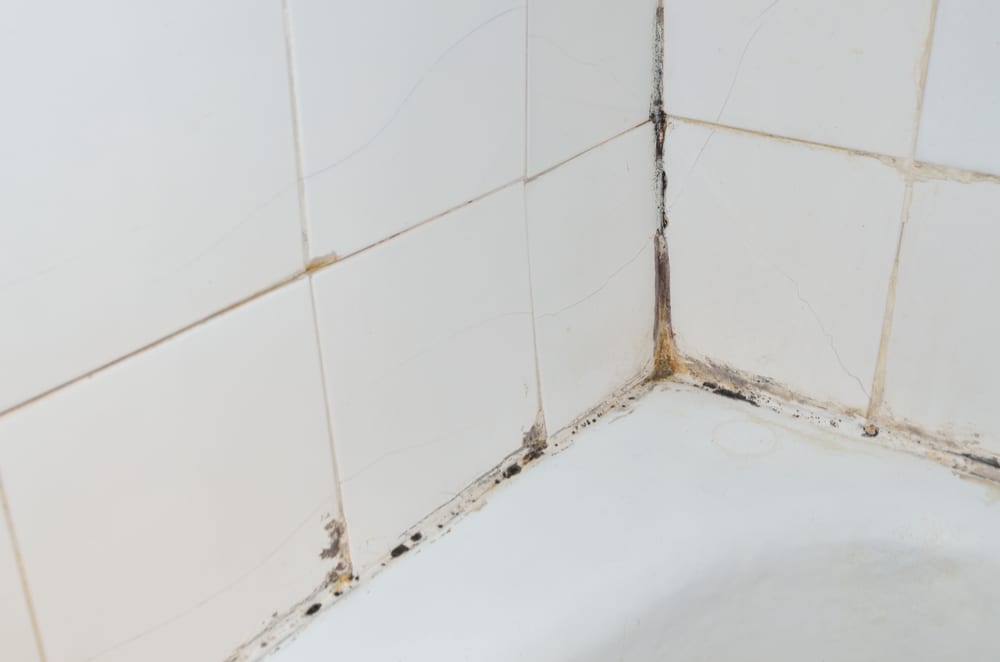Many people think mold and mildew are the same, but they are actually different types of fungus. Although they are alike in many ways, there are a few key differences that set them apart. From how they damage your home to their health risks, we look at the difference between mold and mildew. Our mold vs mildew guide looks at where they are found and how to get rid of them.
Mold vs Mildew: The Difference Between Mold and Mildew
Similarities Between Mold and Mildew
Since both mold and mildew are types of fungus, they are alike in a few ways. This is also why it’s hard to tell the two apart. Mold and mildew both need a consistent source of moisture, an organic material, and the right temperature range to thrive.
They both break down organic material in nature. In your home, they can damage carpeting, walls, countertops and tile. Also, they both may cause some minor health issues. Except in rare cases, these are nothing more than allergies.
Differences Between Mold and Mildew
There are a few key differences between mold and mildew. Mildew is almost always white or light grey. Whereas mold can be a variety of colors. For this reason, it’s hard to determine whether you have mold or mildew only by the color.
Also, mildew is powdery or dusty and grows on flat surfaces in even layers. On the other hand, mold is usually fuzzy and grows on top of itself, rising off the surface. In some cases, mold may look like moss or even like plants.
While they both break down materials, mold works much faster. Mold will do more damage to your home in weeks than mildew will do in more than a year. Health risks from mold are more serious and may cause severe allergies and other conditions.
What is Mold
In nature, mold breaks down organic matter like leaves and trees. In your home, mold will grow on almost any surface in the presence of moisture. Over time, it will break down walls, ceilings and other materials. It is most commonly found in areas with damp or humid conditions like kitchens, bathrooms, and basements.
Also, mold may cause allergy-like symptoms with regular exposure. Symptoms are often worse in those with allergies, the very young and the elderly. People with chronic illnesses, respiratory conditions and immune deficiencies are also more likely to experience severe symptoms.
Common Types of Mold
Although there are more than 100,000 types of mold, so-called toxic black mold is usually what people worry about most. However, black mold can be confusing. While the species Stachybotrys chartarum is what people call black mold, any mold can appear as black.
While all molds pose a small health risk, there is no definitive evidence that black mold is more dangerous than other molds. You can’t identify the type of mold based solely on the color. Like all molds, Stachybotrys isn’t just black. It can appear in many different colors.
What is Mildew
Mildew is also a naturally occurring fungus. While it will grow on most flat surfaces in the presence of moisture, it is more common to plants. It does break down organic material like mold, but it works much slower.
Similarly to mold, mildew also poses a minor health risk. These risks are much lower and symptoms are usually very mild allergies. Since mildew works much slower and has fewer symptoms, it is much less of a concern.
Common Types of Mildew
Like mold, there are a large number of varieties of mildew. However, most mildews are classified in two categories.
- Powdery Mildew – Powdery mildew looks like a white or grey powder. Of the two classifications of mildew, it is the one more likely to be found in homes and businesses.
- Downy Mildew – Downy mildew is more common to plants and is rarely found indoors. Typically it appears as a yellowish stain and slowly turns brown, but the appearance may vary.
How Mildew and Mold Grow Inside Your Home
Mildew and mold both reproduce through spores. These spores exist all around us in the air, which allows mold and mildew to travel virtually anywhere.
Spores can enter your home through open doors and windows and even on your skin or clothes. While these spores can result in mildew or mold, they only pose a risk if the conditions are right for them to grow.
Requirements for Mildew and Mold Growth
- Moisture – Mildew and mold both need a regular source of moisture to grow.
- Organic Materials – They both need a food source. Most materials in your home will support mold and mildew.
- Temperature – Mildew and mold prefer a consistent temperature between 70° F / 21° C and 90° F / 32° C. However, some strains may grow anywhere between 32° F / 0° C to 120° F / 49° C.
- Low Light – Although they don’t require complete darkness, mold and mildew like areas with low light and no direct sunlight.
- Oxygen – While oxygen is a requirement for mildew and mold, even the most stagnant air will allow them to grow.
- Time – Both mold and mildew require time to grow. Mold can grow in as little as 24 to 48 hours. Mildew, on the other hand, takes days or even weeks to grow.
Most Common Places For Mildew to Grow
Mildew will grow anywhere that is damp or humid, but it is normally found in the bathroom. It is also found in kitchens, basements and laundry rooms.
Bathrooms
Bathrooms are the most common room to find mildew. They are warm, wet and have a low amount of light most of the time. Look for mildew around your bathtub and on your shower walls. It can be hard to tell the difference between water spots and mildew. Water spots will wipe away clean with a rag. However, mildew will smear when wiped gently.
Other Common Household Areas for Mildew
- Kitchens – Look for mildew around your sink, on countertops and anywhere there is water.
- Laundry Rooms – Mildew may grow in laundry rooms with poor air movement. Look for it around the exhaust vent of your dryer.
- Basements – If you have a damp, musty basement, look for powdery stains anywhere moisture collects.
Most Common Places For Mold to Grow
Like mildew, mold will grow anywhere there is water. However, it is most common in the following rooms:
- Basements – Basements are known for being damp, which helps make them perfect for mold to thrive.
- Bathrooms – As with mildew, mold is common in bathrooms due to the water, temperature and light levels.
- Kitchens – Look for mold in the kitchen under and around sinks and anywhere there is water.
- Laundry Rooms – Mold is common around dryer vents, in drain tubs or utility sinks or anywhere items remain damp.
How to Treat Mildew
Since it grows slowly and poses little risk of damage, the best way to treat mildew is with regular cleaning. Although so-called mildew cleaners are available, soap and warm water are less expensive and just as effective. Use a rag or sponge to scrub surfaces.
Once you’ve cleaned the mildew, disinfecting the area with bleach as well. Spray it with a bleach solution and allow it to air dry. To keep mildew from returning, spray the area with bleach once a week.
How to Clean Mildew
- Scrub the area with soap and warm water
- Wipe the area dry
- Spray with a weak bleach solution
- Allow it to air dry
- Then spray weekly to keep mildew from returning
Other Ways to Preventing Mildew From Returning
In addition to regular cleaning, there are several steps you can take to keep mildew from returning. These steps will also help prevent mold as well.
- Increase air movement in bathrooms, kitchens and other areas with mildew.
- Clean and dry wet areas right away.
- Use a dehumidifier in areas with water, humidity or condensation.
- Never leave wet clothing or towels piled up.
- Wash and dry towels, washcloths and rags often.
How to Treat Mold
Unlike mildew, mold isn’t as easy to remove. While you can clean mold with bleach, it will return if you don’t fix the water source.
Mold can remain deep within surfaces for a long time. In addition to health risks, mold will continue to cause damage. If you have mold, it is best to make sure it is completely removed.
How to Remove Mold
Regardless of the type of mold you have, the process for getting rid of it is the same. These are the basic steps for mold removal.
- Find and Repair the Water Issue – First, you need to find then repair the water problem that caused the mold. Otherwise, it will return.
- Dispose of Contaminated Materials – Mold will remain deep in walls and carpeting even after fixing the water problem. You should throw away items coated by mold.
- Dry the Area – Use high-volume fans and dehumidifiers to dry the area. This can take 24 to 48 hours, depending on the size of the room.
- Clean and Disinfect – Clean the room with soap and warm water. Then spray with bleach to kill any remaining mold.
- Reconstruction – Finally, rebuild the room to its original condition.
Get Safe, Reliable Mold Removal Services
If you are concerned about mold, let the specialists at Restoration Local repair the damage. Call 1-888-443-3110 now for a free estimate on mold removal services.







